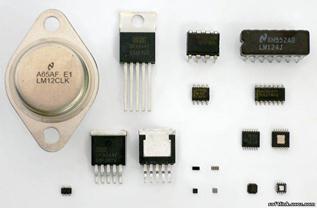Digging in the Land of Magan
Read the following article without a dictionary and find the answers to the questions:
1. What proofs show that ancient cultures existed in Arabian Peninsula 8000 years ago? 2. What famous ancient city was discovered in the middle of the XX century? Where was it situated? 3. What artifacts were discovered near Jabal-Hafit? 4. Where might the legendary Land of Magan be? Excavations yield evidence of cultures spanning some 8,000 years. Oman's early settlers were Neolithic pastoralists and seafaring people who worked trade routes from Mesopotamia to the Indus Valley. Arrowheads found in Qatar in 1960 by Danish prehistorian Holgar Kapel and ash from ancient campfires found in Muscat in 1983 are the earliest evidence of the nomads who followed their flocks south from the Levant, settling the Arabian peninsula 8,000 years ago. Remains of Neolithic camps found during the past three decades suggest that as Arabia's climate became wetter, these herders thrived, roaming in widely dispersed groups from Syria and Iraq in the north to Dhofar in southern Oman. The resources of the Arabian Gulf supported fishing communities along the coast. In the 1970s Italian archaeologists unearthed shell and fishbone middens, evidence of a 7,000-year-old fishing village at Ras al Hamra, a rocky promontory in Qurum, ten miles west of Muscat. Carbon dating indicates that these middens and burials were in continuous use from 6000 to 3000 B.C. A dearth of faunal remains suggests that the community was isolated from inland areas, where small game was abundant. In the 1950s Danish archaeologists excavating grave mounds in Bahrain, northwest of Oman, found 4,200-year-old settlements and temples of the city-state of Dilmun, known as the city of the gods in ancient Sumerian literature. Their 1959 discovery on the island of Umm an-Nar off Abu Dhabi of a second, previously unknown culture contemporary with Dilmun was unexpected. At the site an outer wall enclosed circular graves, 15 to 40 feet in diameter and often two stories high, in which as many as 30 people were buried. Spurred on by the discoveries at Dilmun and Umm an-Nar, Danish archaeologists excavated 200 single-chambered burial cairns in 1961 near Jabal Hafit on the Oman-United Arab Emirates border. There they discovered a culture earlier than that of Dilmun or Umm an-Nar. Excavation yielded jars with geometric designs painted in black, white, and plum red; copper and bronze pins; and stone and faience beads. The jars were the same type as those used in southern Mesopotamia around 3000 B.C. Unfortunately there is little trace of the ancient settlements associated with these tombs. Was Oman the land of Magan, which appears in Sumerian cuneiform texts ca. 2300 B.C. as a source of copper and diorite for the flourishing city-states of Mesopotamia? These texts tell us that ships with a cargo capacity of 20 tons sailed up the Arabian Gulf, stopping at Dilmun to take on fresh water before continuing to Mesopotamia. They also say that Magan lay south of Sumer and Dilmun, was frequented by Indus Valley travelers, and had high mountains from which diorite or gabbro for black statues was quarried. Research since the 1970s has located significant copper deposits and more than 150 medieval Islamic smelting sites. Excavations by the German Mining Museum have identified numerous Magan-period (2500-2000 B.C.) slag heaps under tons of medieval slag and third millennium remains from mining and smelting at the oasis village of Maysar in central-eastern Oman. A hoard of bun-shaped copper ingots found in a small fireplace indicates the form in which copper was traded. Today, oil has taken the place of copper and frankincense as the source of Oman's wealth. Development has led to the destruction of many historical and ancient sites--some before they have been identified, let alone excavated. We can only hope that the remaining sites can be saved for excavation before they are swallowed up in the country's march toward modernity. by M. Redha Bhacker and Bernadette Bhacker the Archaeological Institute of America Vol. 50 №3, May/June 1997
|




